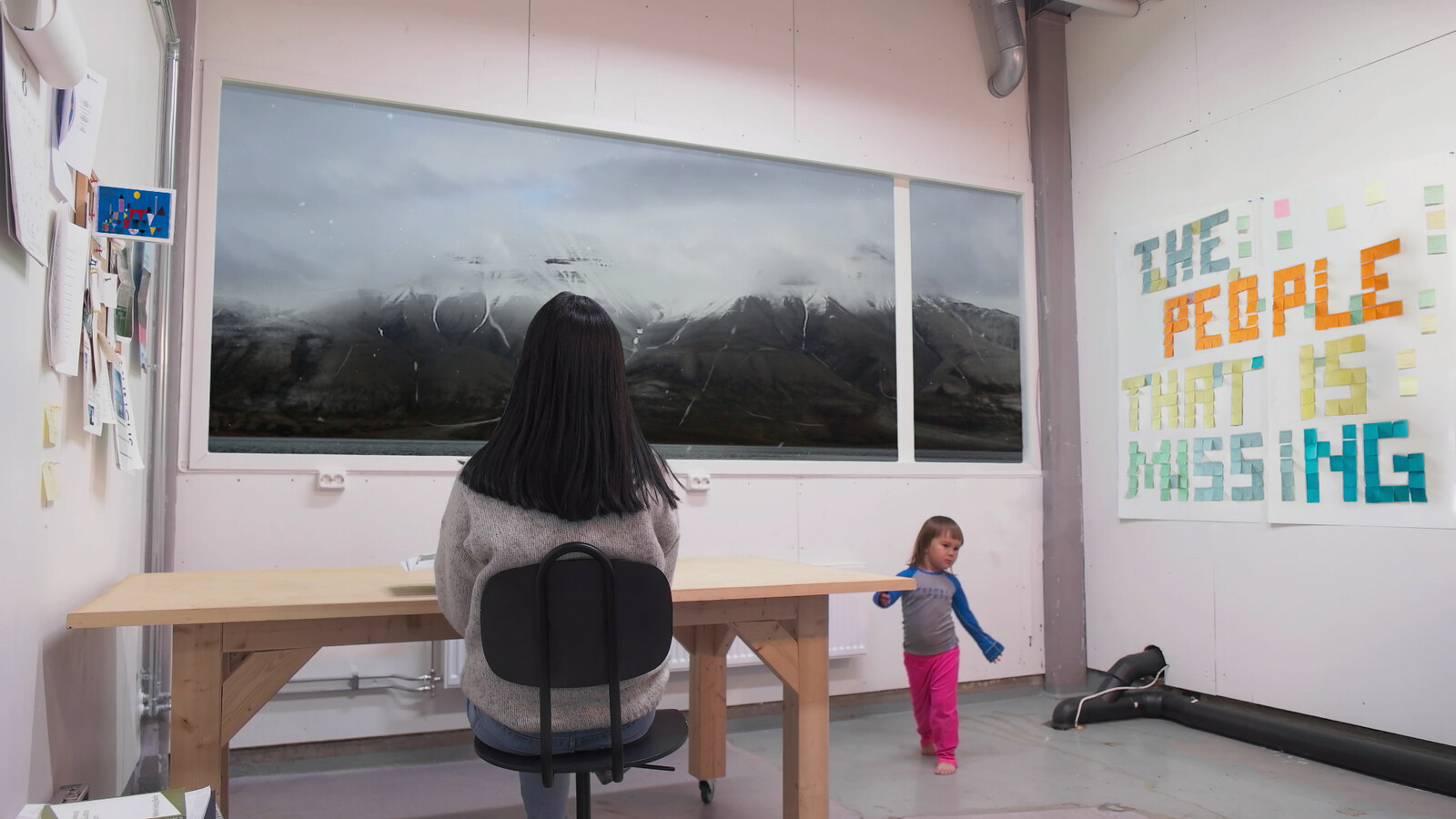Cristina Lucas presented by Office for Contemporary Art Norway and Artica Svalbard
November 30, 2019, 12pm
Artica Svalbard and Office for Contemporary Art Norway (OCA) are delighted to present Cristina Lucas as the guest artist for Artica Listens 2019, co-curated by the two organizations.
For Artica Listens 2019, Lucas takes the nearly 100-year-old Svalbard Treaty as a point of departure. Her project includes specially commissioned works of interactive public sculptures and a new film entitled The People That Is Missing that Lucas has shot in Svalbard over the last year. Both will premiere in Longyearbyen during Artica Listens on November 30, 2019.
For full programme, please click here.
Reflecting on her ideas for approaching Artica Listens, Lucas states:
“It is in Svalbard where the alarm goes off first. Avoiding the melting of the Arctic and thereby saving us from the terrible global effects that this entails implies falling into another rhetorical figure, to inhabit the synecdoche in which Svalbard is understood as a short hand for our planet as a whole.”
The Svalbard Treaty today stands as a singular document of international collaboration. Nearly 100 years after its signing, it remains a functioning agreement among 44 nations that, while recognising Norwegian sovereignty over the archipelago, proposes a formulation with utopian ideals of an international commons rarely seen in global geopolitics.
From 1920, the treaty legally constituted Svalbard as a zone of non-fortification and granted signatory nations equal access to commercial and scientific activities. However, in an age of rising nationalisms, trade wars, extractive economies, global intelligence gathering and mobility restrictions, those geopolitical parameters emerge as major forms of contention within the treaty today, inserting a series of contradictions and oxymorons into the governance of one of the world’s most sensitive natural environments.
With these contradictory qualities of the treaty in mind, Cristina Lucas reflects on key questions her project seeks to raise:
“For my intervention in Artica Listens, I would like for poetic figures to reinforce how our self-destructive mechanisms cast us as the greatest threat to our own survival. It seems natural to think that what begins has to end, but how easy is this to assume when it is our own species in question? Will it be possible to reverse the processes that otherwise undoubtedly lead us to a not so far off apocalypse?”
It’s in this context that Lucas’s newly commissioned film and sculptures probe the treaty’s utopian appeal to international cooperation and shine a light on the paradoxes that are revealed, one hundred years later, within a rising tide of global geopolitical disunion and lack of concerted will to reverse the human-made destruction of our planet.
Artica Listens is a new project launching as part of Artica Svalbard’s programme. Taking place in the Svalbard archipelago this November, Artica Listens sets out not only to enliven some of the most urgent questions of our time, but to do so from one of the most challenging sites in the world.
Based in Madrid, Spain, Cristina Lucas is an artist interested in mechanisms of power. She analyses principal political and economic structures, dissecting them in order to reveal the contradictions between official history, reality, and collective memory. Her work has been presented in solo exhibitions at Centro de Arte Dos de Mayo, Museo de Arte Carrillo Gil in Mexico; MUDAM Luxemburg; and Tegenboschvanvreden, Amsterdam; as well as in group exhibitions at Manifesta 12, Palermo; the 12th Shanghai Biennale; MACBA, Barcelona; the 28th Bienal de São Paulo; and the 10th Istanbul Biennial.
Artica Svalbard is an independent foundation facilitating an artist residency programme and public programme in Svalbard, supporting the development of Norwegian and international art and culture by enabling artists in all genres to create and present their art in Longyearbyen and around the Svalbard Archipelago. Artica Svalbard was founded in 2016 by the Norwegian Ministry of Culture, Fritt Ord (the Freedom of Expression Foundation) and the Cultural Business Development Foundation of the bank SpareBank1 Nord-Norge. Artica’s Key Partners are Norwegian PEN, Office for Contemporary Art Norway (OCA), and the Queen Sonja Print Award (QSPA).
Office for Contemporary Art Norway (OCA) is a non-profit foundation created by the Norwegian Ministries of Culture and of Foreign Affairs in 2001. Its principle aim is to foster dialogue between art practitioners in Norway, including Sápmi, and the international arts scene, and support artists based in Norway in their activities around the world. As a result OCA’s discursive, exhibition, publication, residency and visitor programmes focus on bringing to Norway the plurality of practices and histories at the forefront of international artistic debates, as much as they are concerned with actively participating in such debates nationally and internationally. OCA has been responsible for Norway’s contribution to the visual arts section of the Venice Biennale since 2001.



